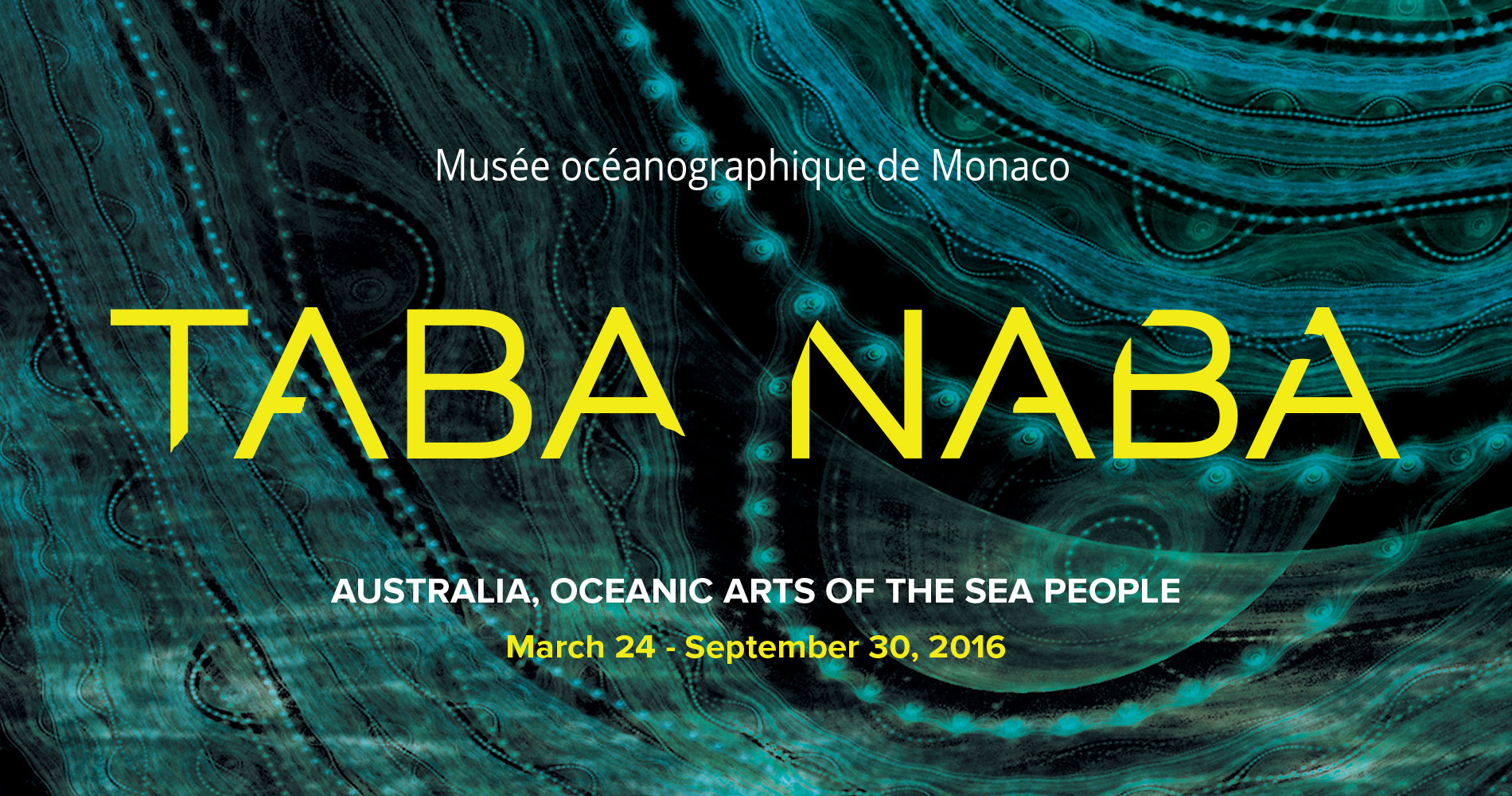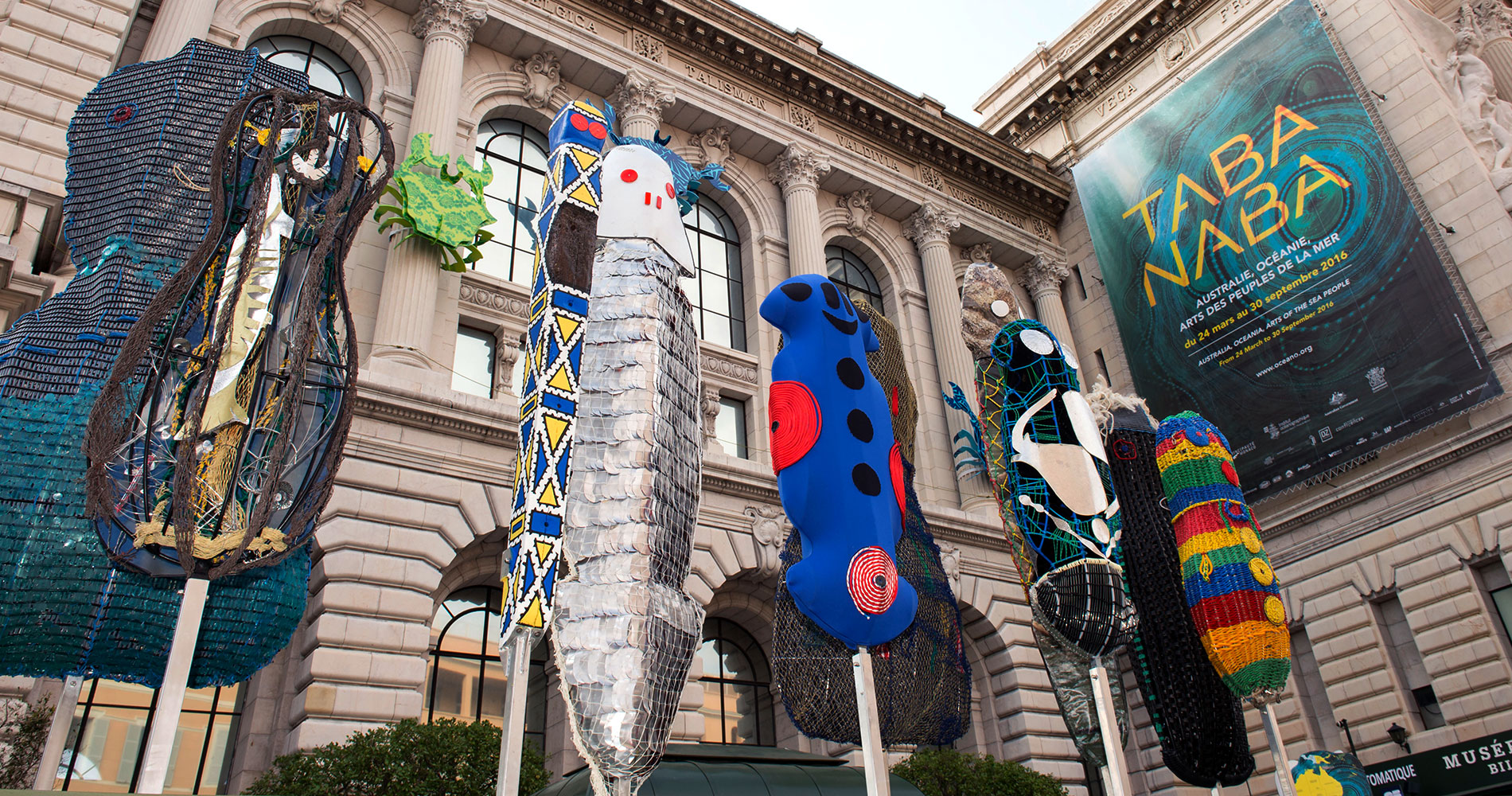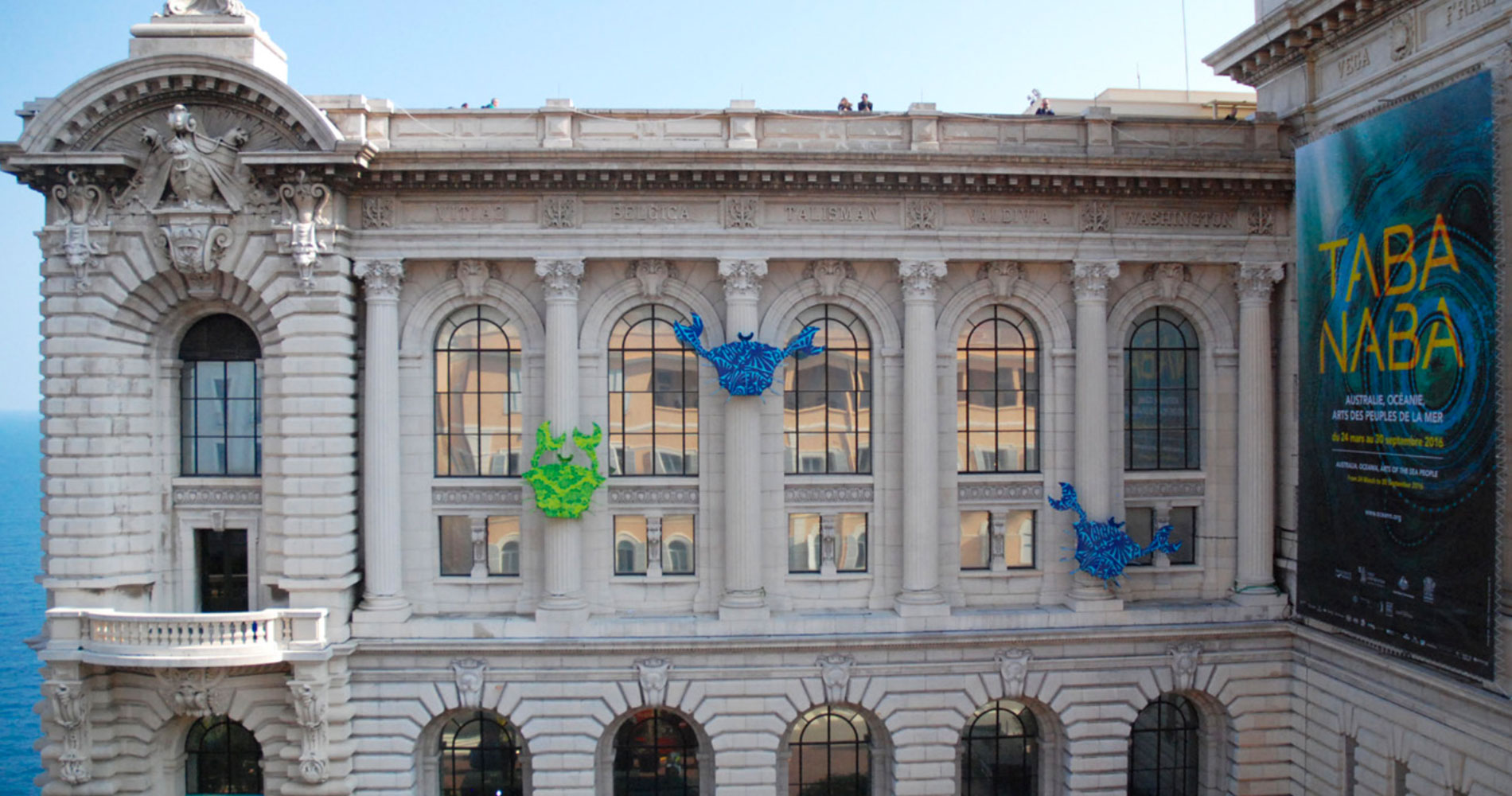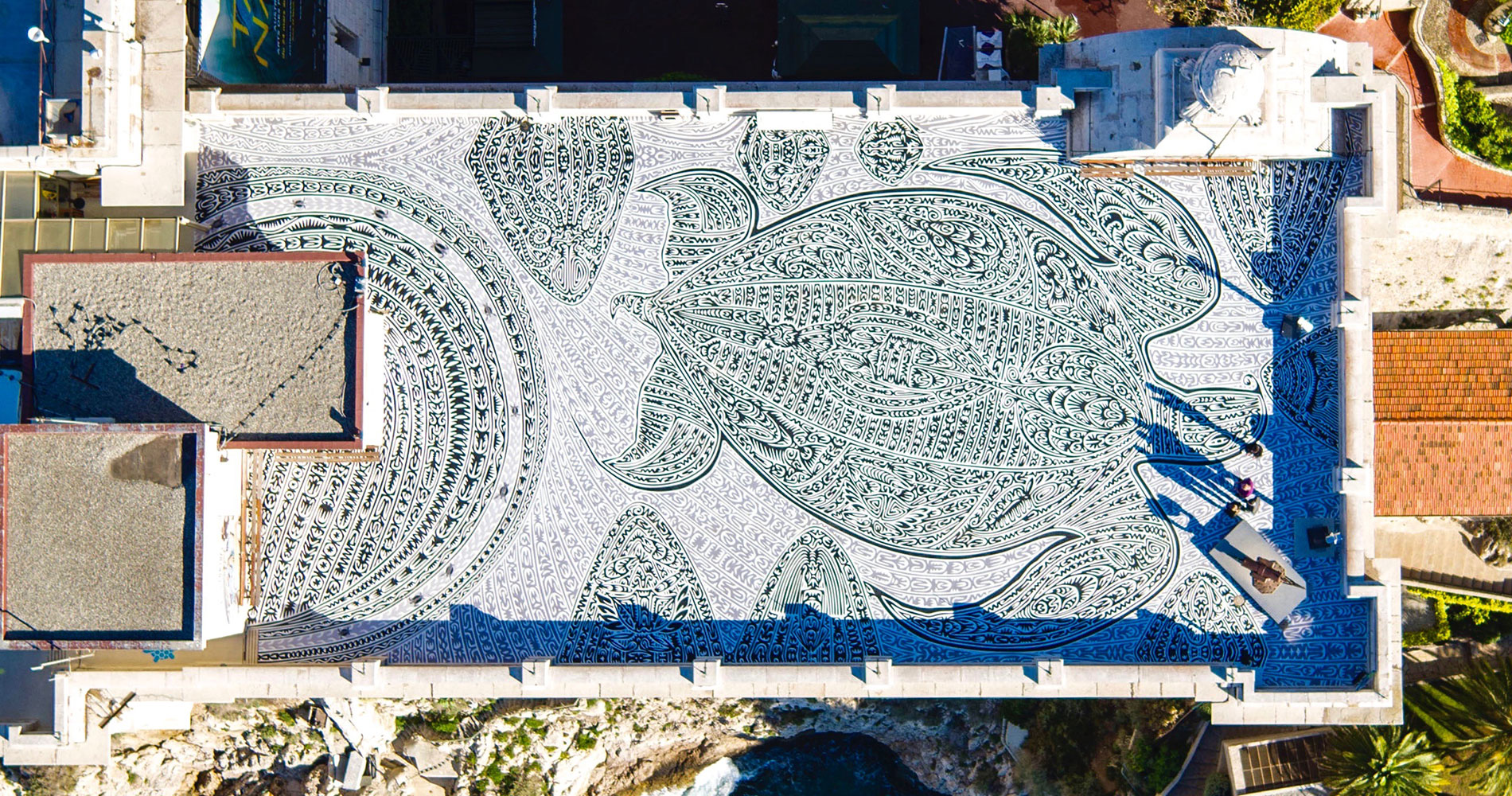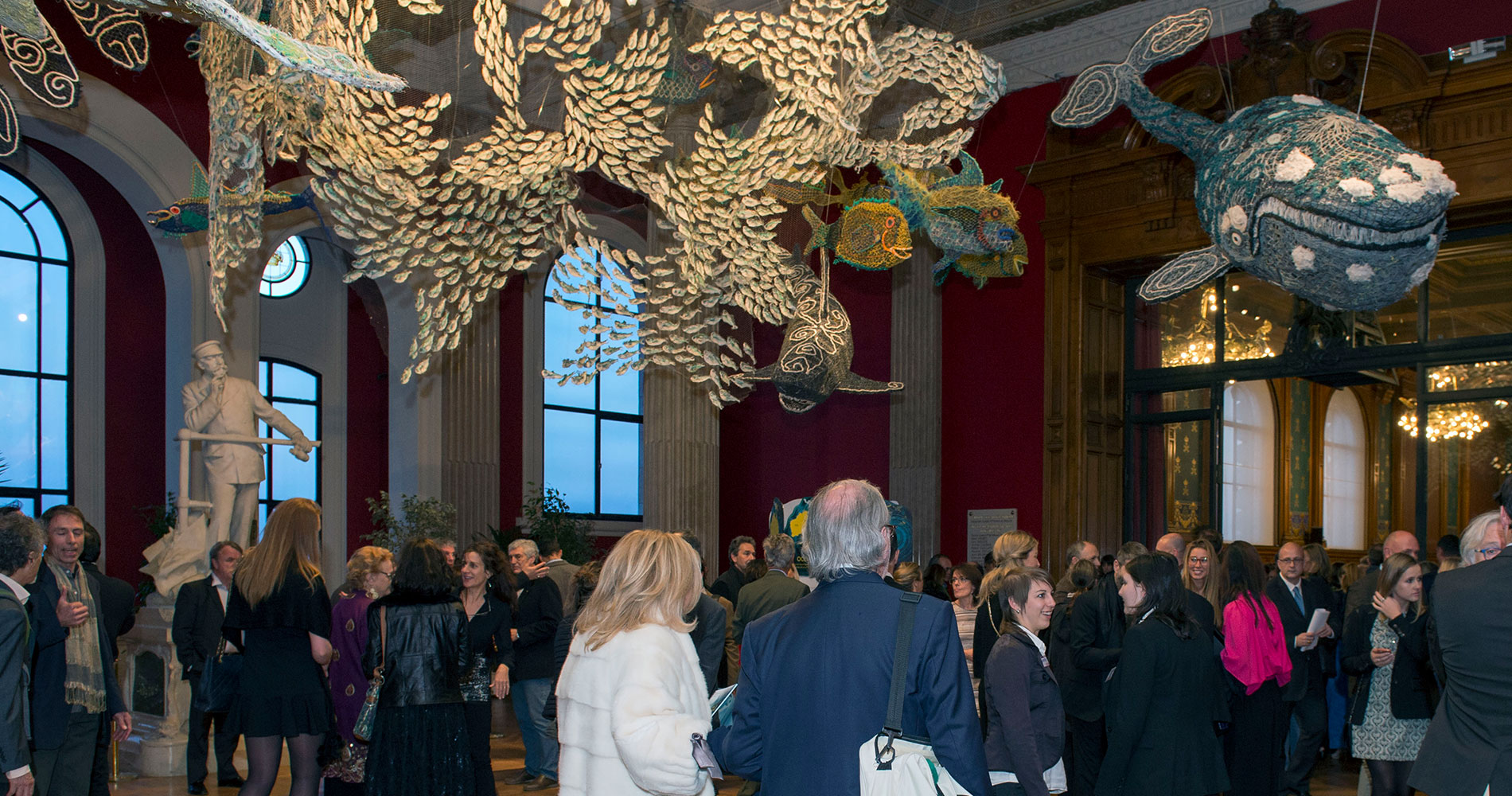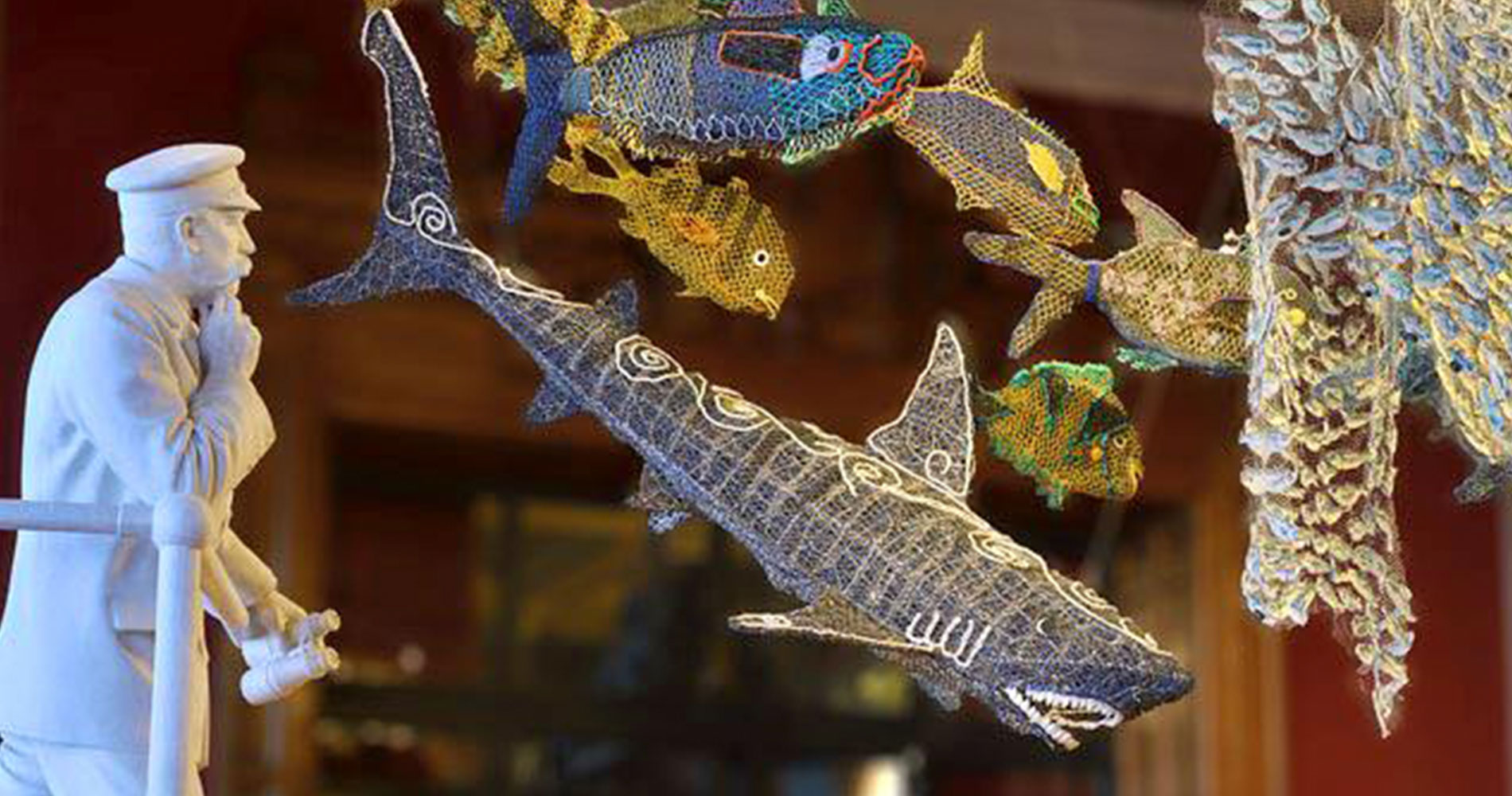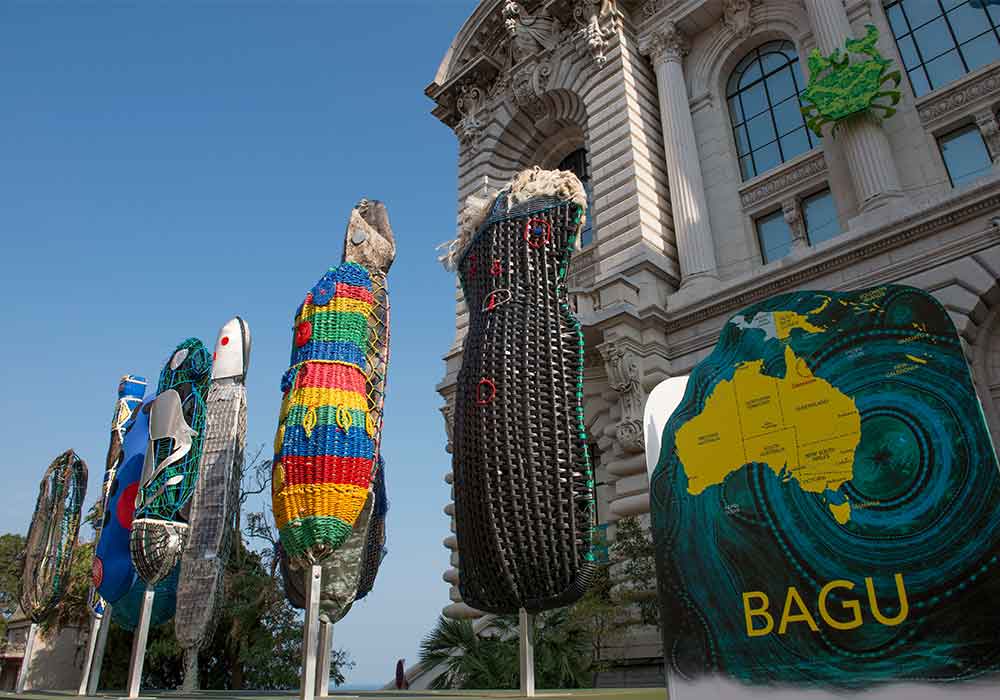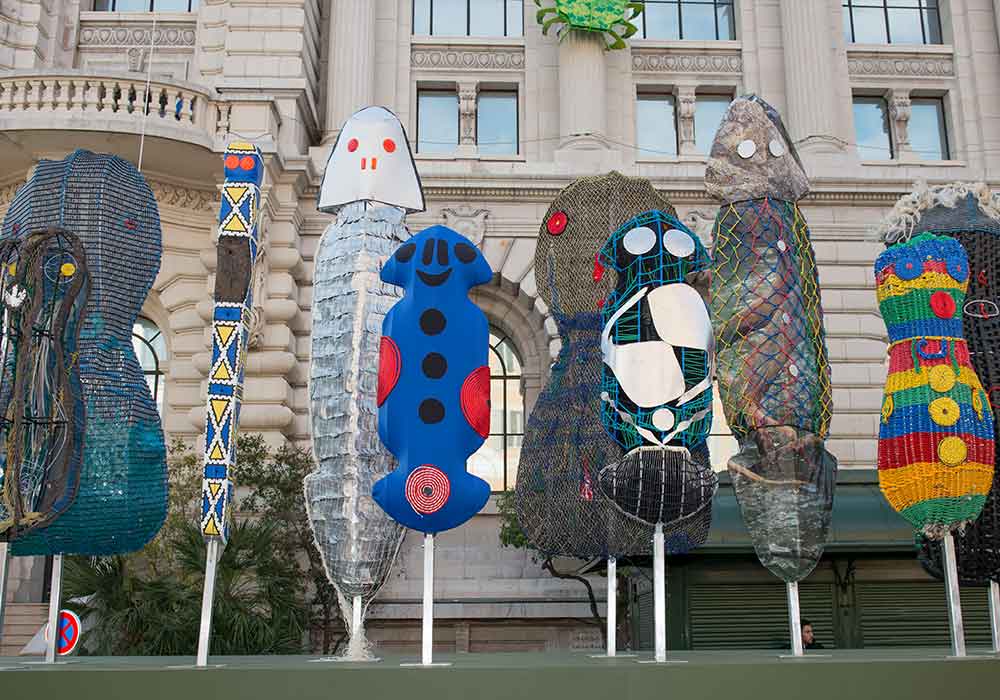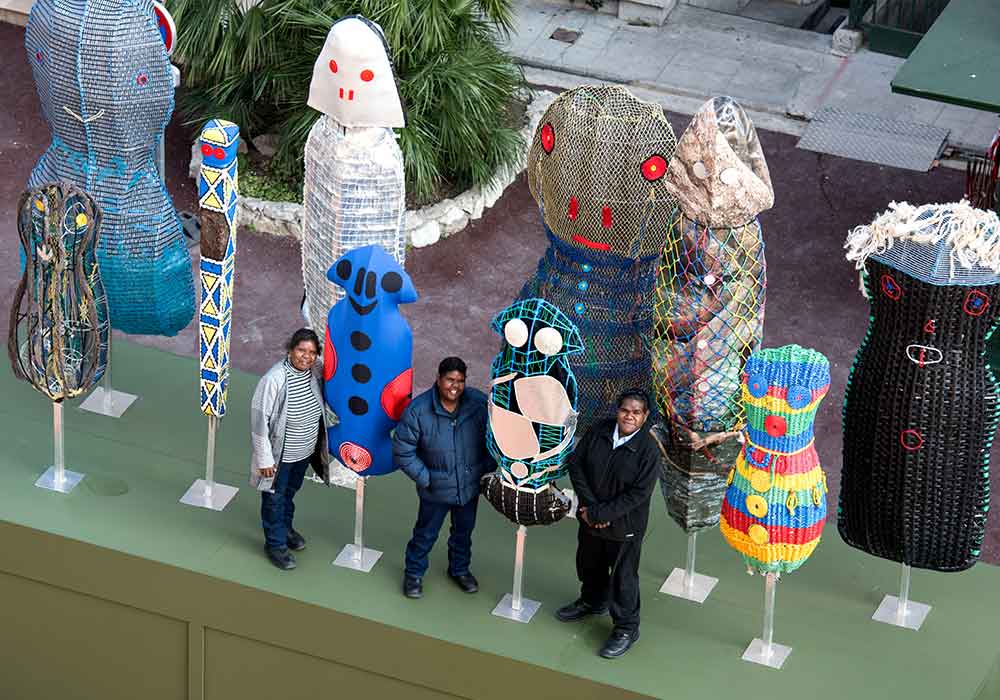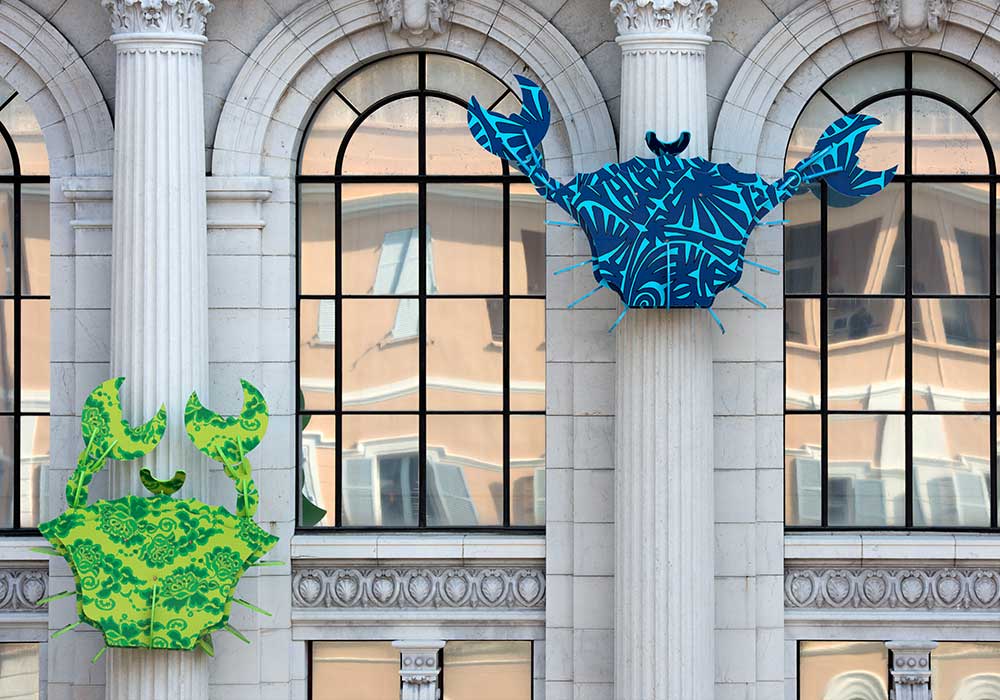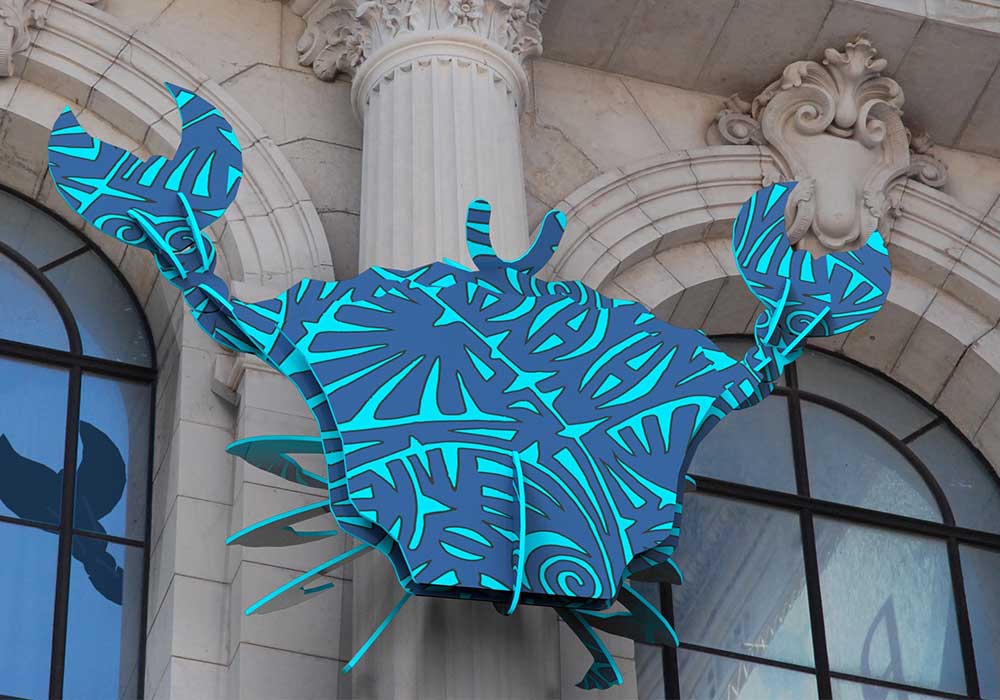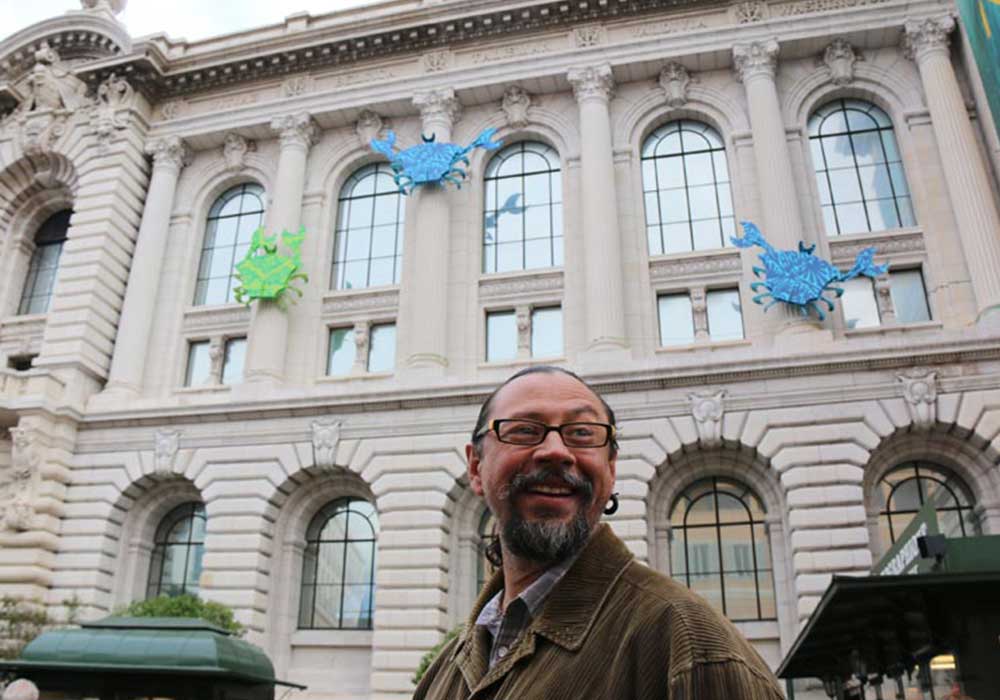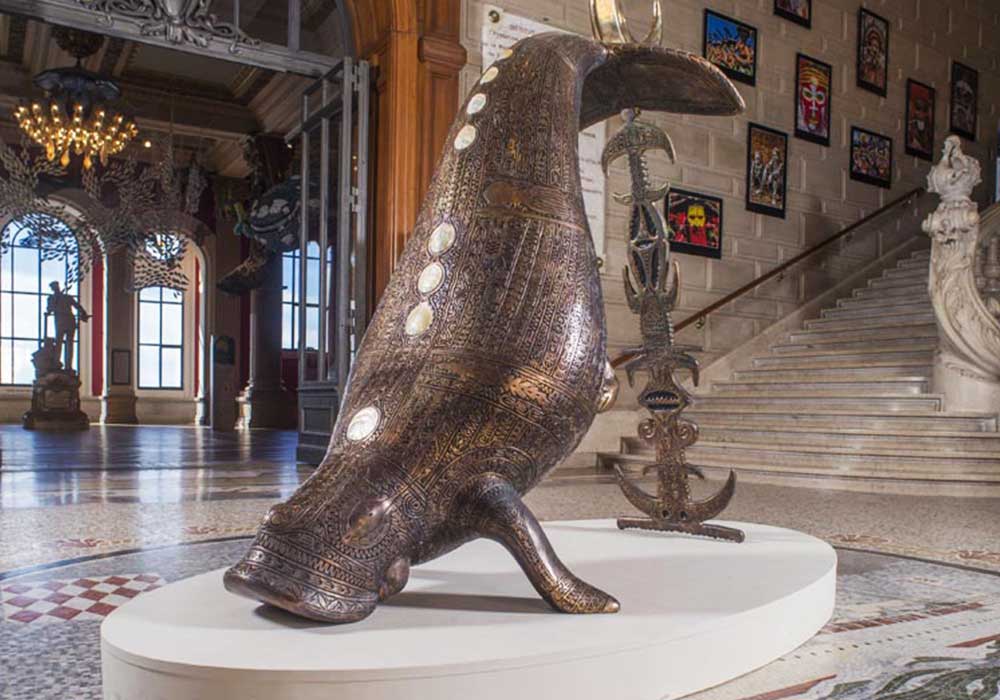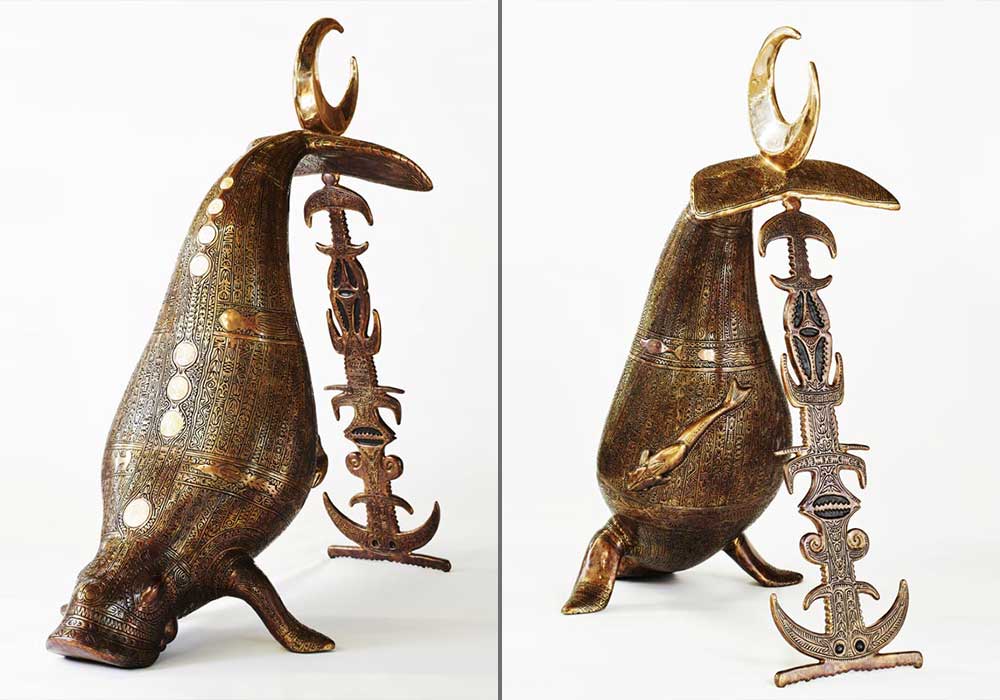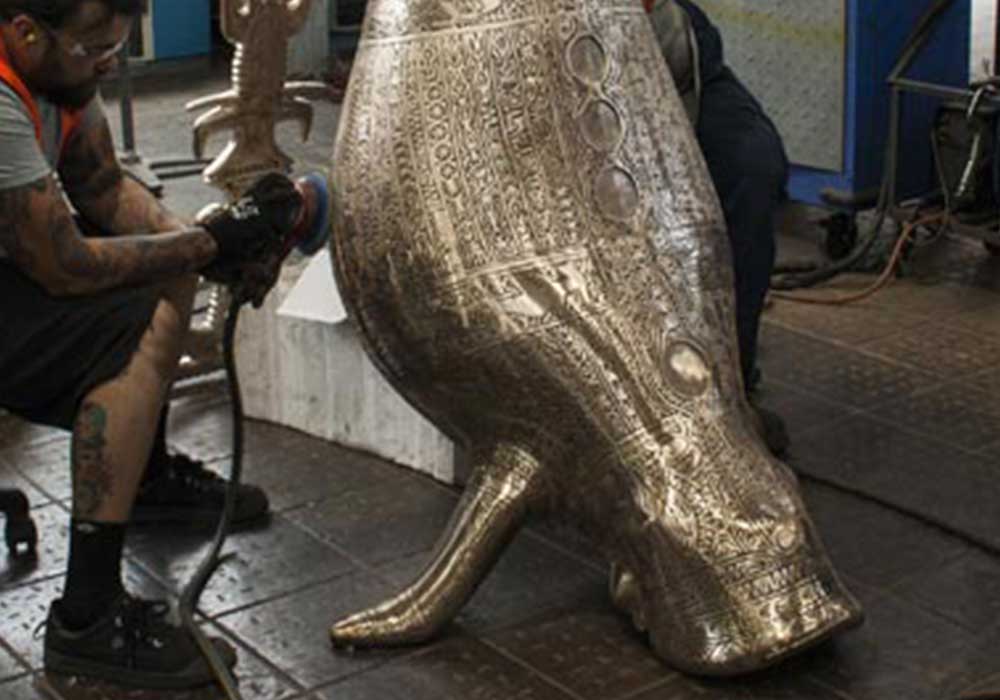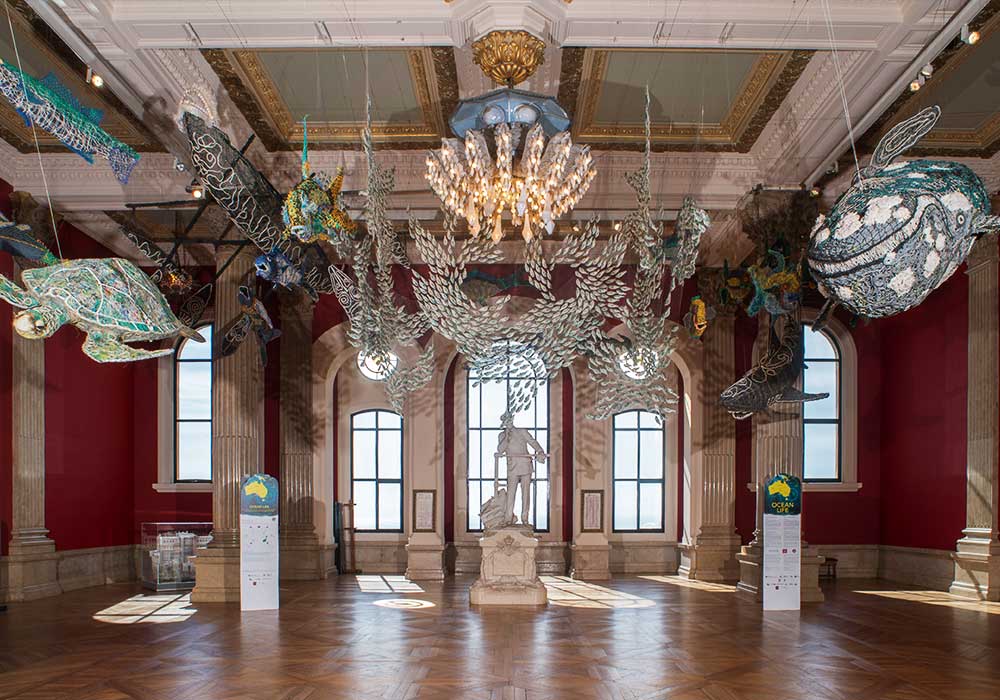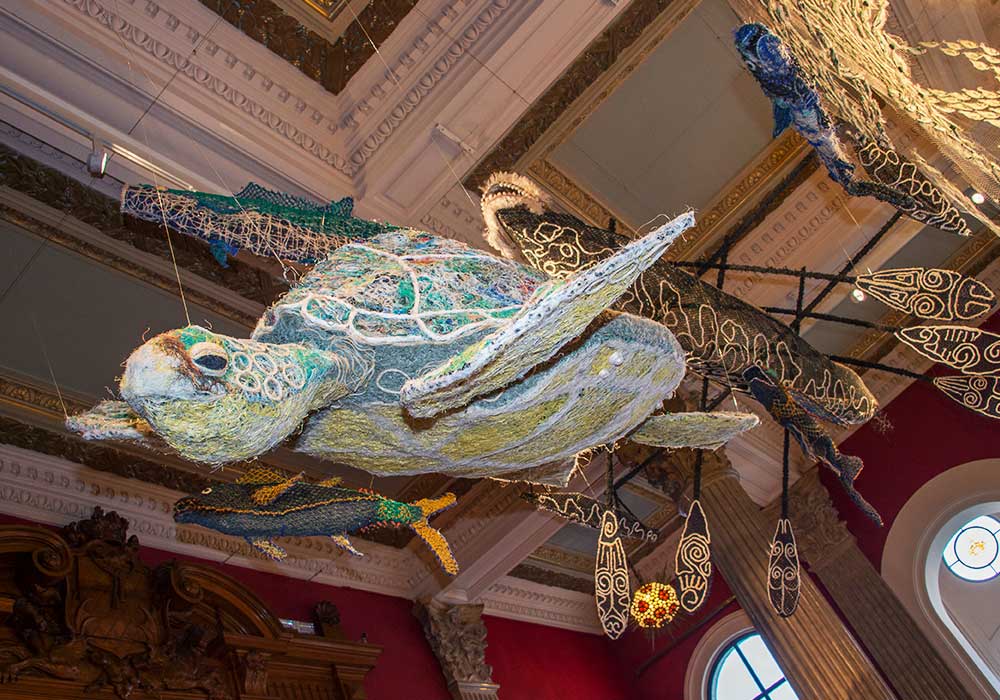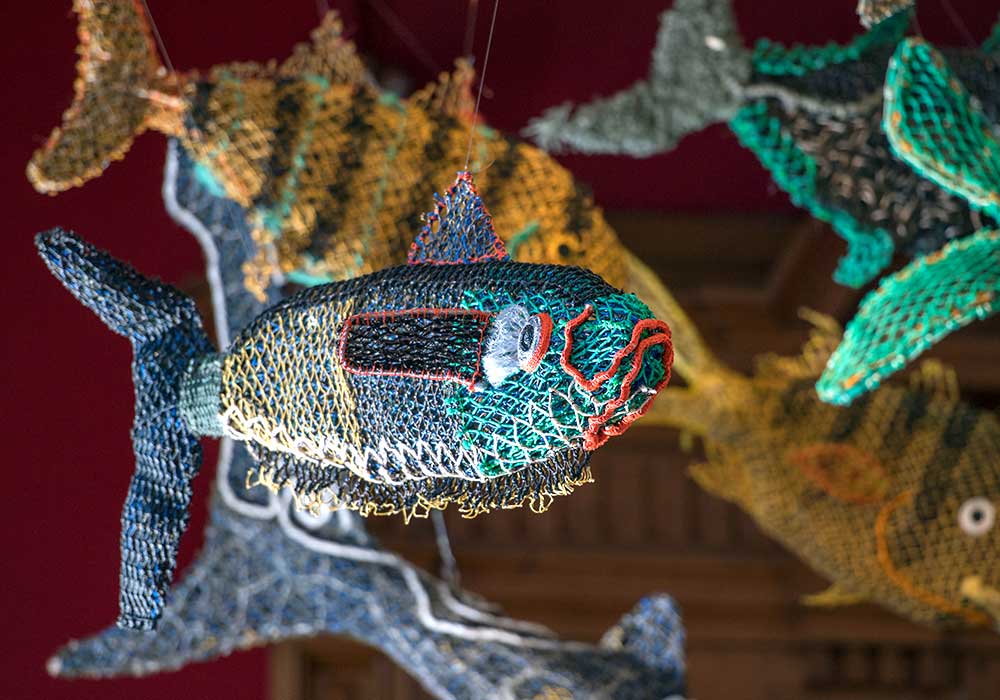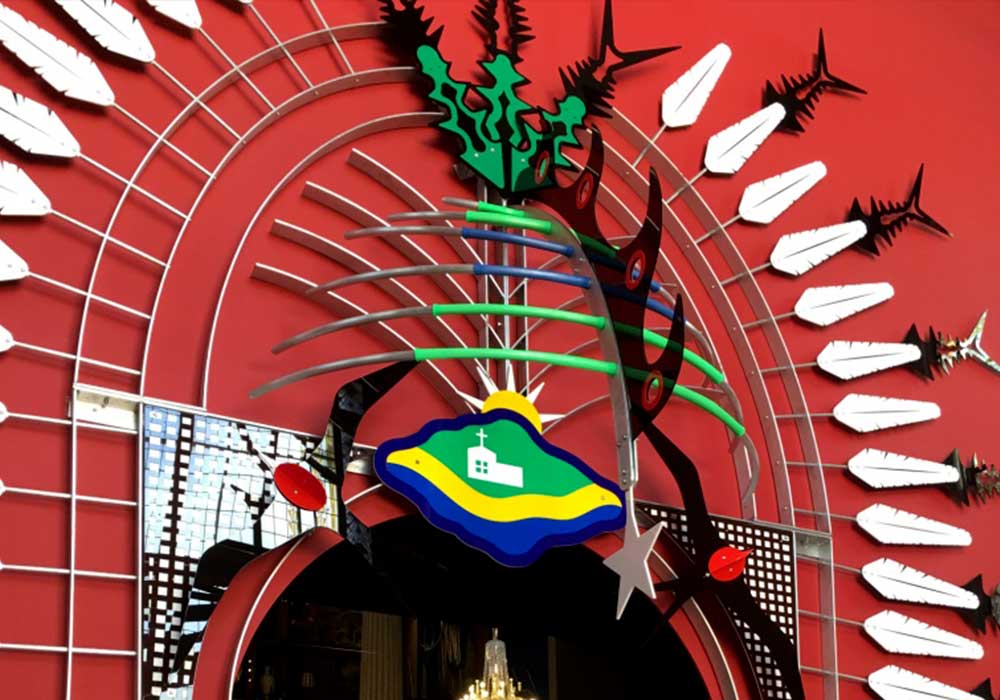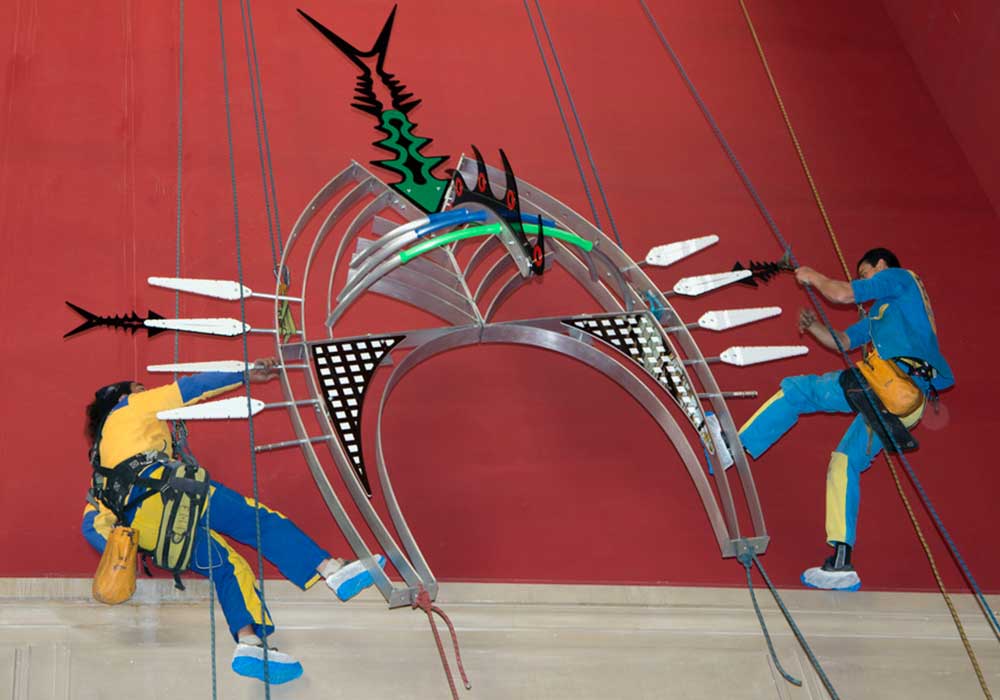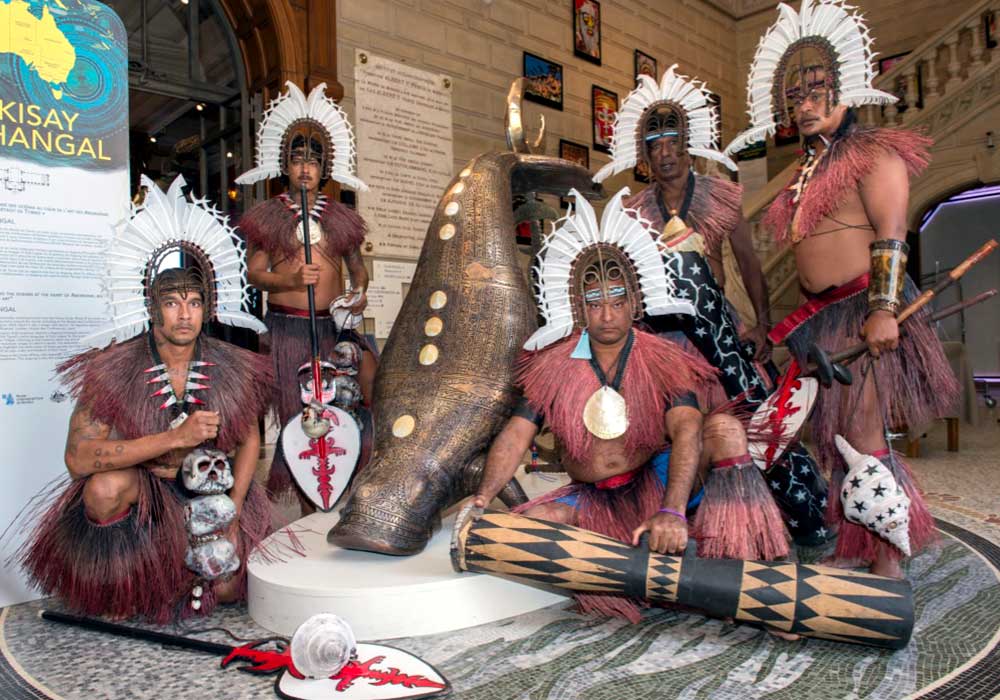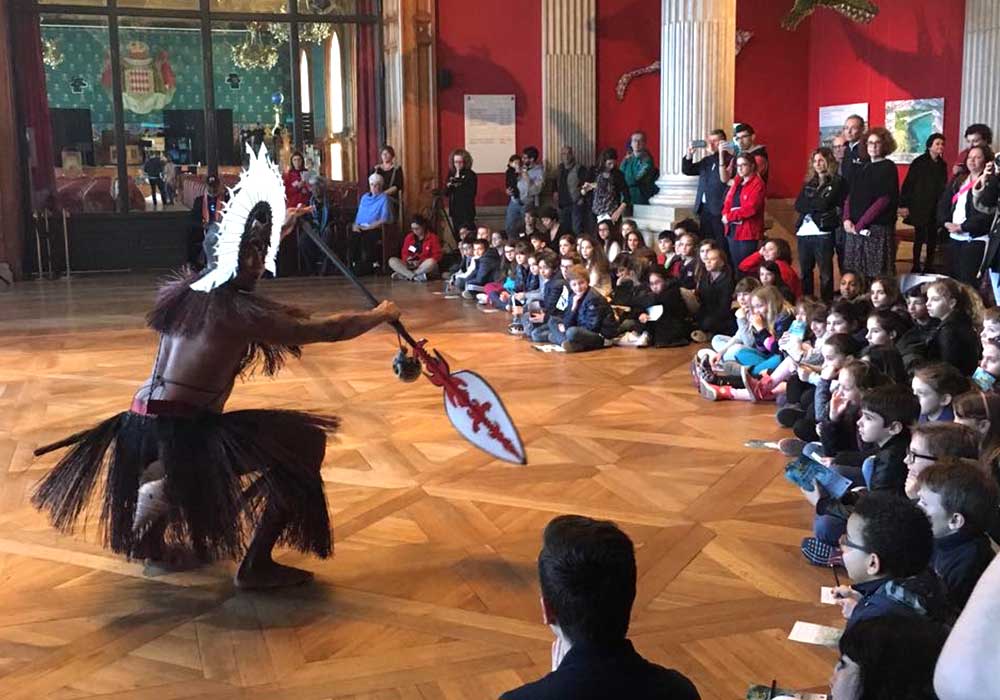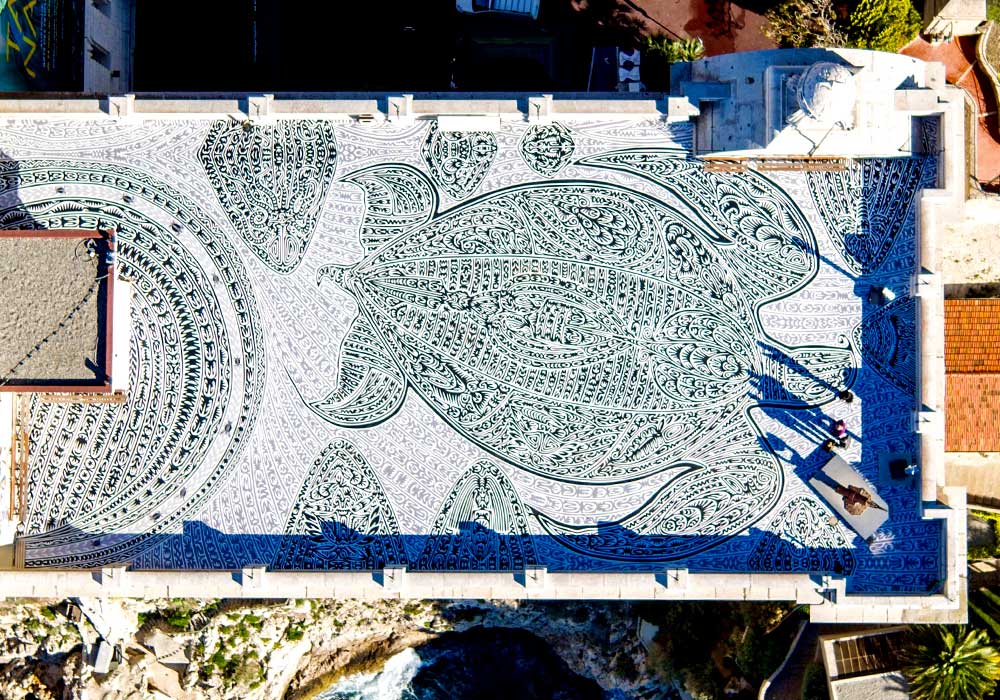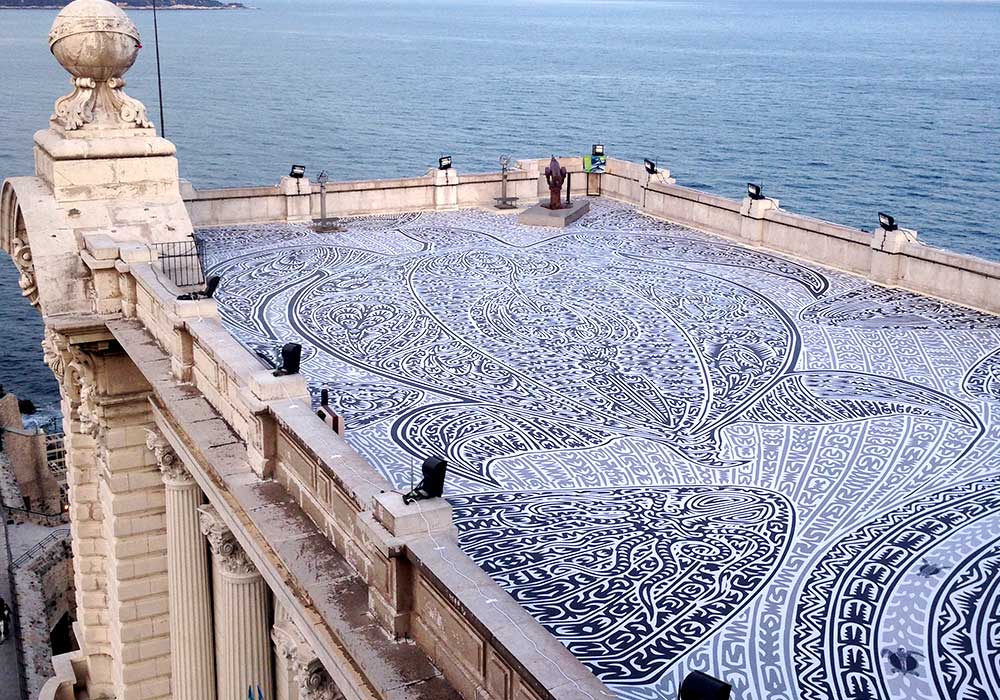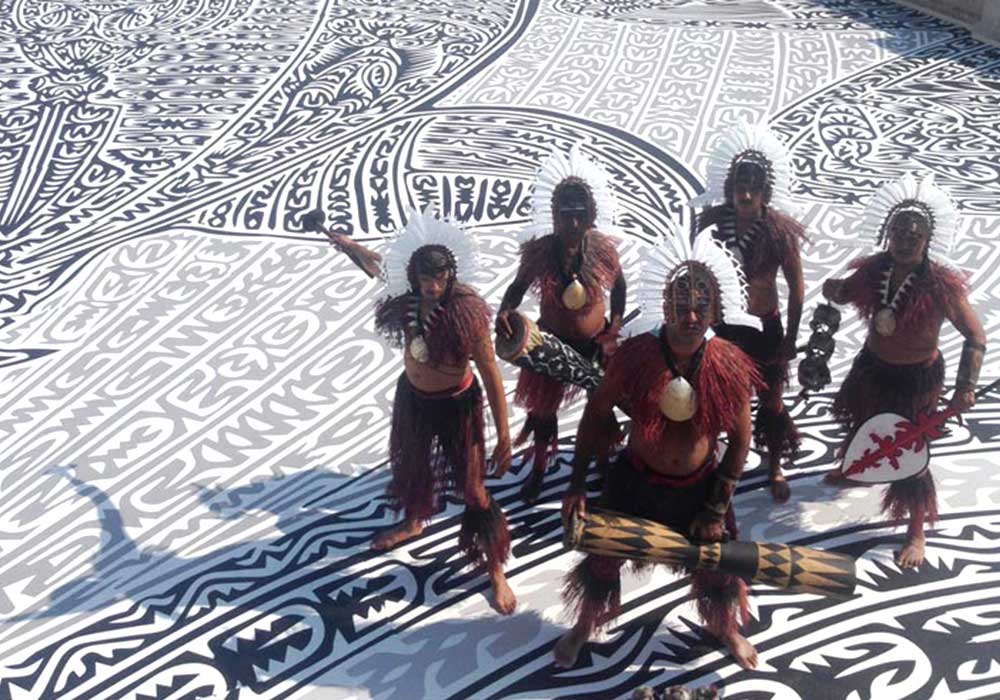AUSTRALIA: DEFENDING THE OCEANS AT THE HEART
OF ABORIGINAL AND TORRES STRAIT ISLAND ART
Curated by Suzanne O'Connell & Stéphane Jacob.
"The artworks are true advocates for the preservation of marine ecosystems and are particularly powerful when viewed in the rooms of the Oceanographic Museum; creating a living dialogue across our collections."
H.S.H. Prince Albert II of Monaco
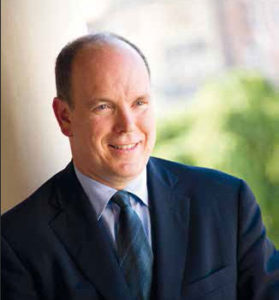
On the 1st of April 2015, the Oceanographic Museum of Monaco met with Stephane Jacob of Arts d’Australie and Suzanne O’Connell of the Brisbane based Suzanne O’Connell Gallery, to present a large scale and innovative collection of sculptural Indigenous Australian Artworks. In accordance with the Museum’s charter of ocean preservation, the concept of environmentally conscious sculptural works from Tropical North Queensland emerged. The Aboriginal community of Ceduna (South Australia) was also represented.
As one of three exhibitions making up the “Taba Naba – Australia, Oceania, Arts of the Sea People”, the exhibition featured over 50 artworks from five different remote communities: Darnley Island (Erub), Porppuraaw, Badu Island, Ceduna, and Cardwell (Girringun). Opening in late March 2016 until until late September the exhibition attracted well over 400,000 attendees and featuring in 150 media outlets.
Key artists included: Alick Tipoti, Dr. Ken Thaiday, and Brian Robinson.
As a direct result of “Taba Naba” exhibition in 2016 multiple opportunities have since arisen for the ‘Defending the Oceans’ exhibition to be toured throughout several venues throughout Europe and the United States.
MUSEUM FORECOURT
Bagu
The Bagu were originally firewood. They were traditionally composed of two parts, the Bagu (body) and the Jiman (stick). These objects were of sacred value because of the torrential rains that regularly fall in this tropical region. They were transported according to the displacements by this nomadic people. Women were not allowed to manipulate them, only one man designated by the group was solely responsible for the fire and had to ensure that it never went out, because the surrounding wood was mostly wet. In addition to cooking food, the fire was used to warm up, make weapons and was at the center of ceremonies. It also strengthened social ties as well as water sources in drylands.
Artistes / Artists: Ninney Murray, Emily Murray, Sally Murray, Ethel Murray, Debra Murray, Alison Murray, John Murray, Jonas Murray, Theresa Beeron, Daniel Beeron, Philip Denham, Maleisha Leo, Eileen Tep, Clarence Kinjun, Doris Kinjun, Marjorie Kinjun, Elizabeth Nolan, Sigourney Thaiday, Leonard Andy, Special thanks Girramay Elder Claude Beeron
MUSEUM FACADE
Malu Githalal
The artist Brian Robinson was born on Waiben in the Torres Strait Islands, between the tip of the Cape York Peninsula and Papua New Guinea. Climbing along the Museum's facade, the three mangrove crabs that the artist has fashioned from aluminum serve as an invitation to explore the exhibition.
Mangrove crabs, known as Githalal in the artist's Indigenous language, are a continuation of Brian Robinson's work exploring the traditions, symbols, and mythology of his people.
The Githalal, found along the coastline of Brian Robinson's native island and used for centuries as a source of food by the islanders, highlight the importance of preserving marine wildlife to safeguard the culture of his native region long into the future.
ENTRANCE HALL
Kisay Dhangal
Alick Tipoti is an internationally acclaimed artist from the Torres Strait. Many of his works are displayed in public collections around the world, including at the Musée des Con uences in Lyon. A print maker and sculptor, Alick Tipoti is also a singer and dancer. He regularly appears in art performances (British Museum, London, Musée des Con uences, Lyon). The artist’s bronze-and-pearl shell sculpture depicts a dugong (Dhangal) swimming in the moonlight (Kisay). In Alick Tipoti’s native language of Kala Lagaw Ya, the position adopted by the dugong is known as San Tidayk, referring to the moment when the animal raises its tail to dive to the grassy underwater mountain ranges on which it feeds. The delicately carved motifs on the surface of the sculpture highlight the destruction of these grasses by huge merchant ships that deprive dugongs as well as rays, crabs and lobsters of their food.
HALL OF HONOUR
Ocean Life
‘Ocean Life’ is an installation of sculptures in the Hall of Honour made from ghost nets. Ghost nets is a term for fragments or large sections of fishing nets often wantonly abandoned off fishing vessels and now floating in surprisingly large quantities throughout our oceans. Washed up nets along the coastlines of the Torres Strait Islands and Cape York have been utilised by innovative artists to create depictions of marine animals vulnerable to the adverse consequences of such net hazards. Turtles, sharks, dugongs, crocodiles and whales are often trapped, killed or harmed in the process of trying to break free. A strong motivation of the Ghost Net art movement is to raise awareness of the devastating effects of this pollution on marine animals, but also to the livelihoods, custodian duties and identity of sea peoples themselves, worldwide. The interdependence of species and ecosystems depends on an urgent response and global awareness.
This installation is a collaborative work between Erub Arts (Torres Strait, Queensland), Pormpuraaw Art and Culture Center (Cape York, Queensland), and the Tjutjuna Arts and Culture Centre (South Australia).
FIRST FLOOR LANDING
Dhari
The three sculptures displayed on the high red walls of the first-floor landing are the work of Ken Thaiday Snr., an artist renowned for pieces that incorporate symbols from his native island of Erub (Darnley Island). Those works have been made in collaboration with a Sydney artist, Jason Christopher. They depict ceremonial headdresses made for dances and recall traditional fish traps.
Note that a Dhari appears on the Torres Strait Islander Flag. While art from the region remains relatively unknown, it is extremely vibrant and varied, revealing the close link between Torres Strait Islanders and the marine environment around them.
TERRACE (SECOND FLOOR)
Sowlal
This piece by Alick Tipoti depicts the body of a giant sea turtle, itself made up of dozens of marine creatures and the flora and fauna found across the Torres Strait Islands.
Displayed on the floor of the Museum’s terrace and occupying some 600 m2, this is one of the largest artworks ever created by an Indigenous artist. The installation is also visible from the air when flying over the Museum, a vantage point that allows the turtle’s body to be seen in full.
Every year, the Oceanographic Institute places specific emphasis on a protected species. For 2016, its “marine ambassador” is the sea turtle.
ACKNOWLEDGEMENTS
Photography by Michel Dagnino and Jacques Tomasini
“Australia: Defending the Oceans at the Heart of Aboriginal and Torres Strait Islands Art”
Project Manager, Coordinator & Senior Curator: Stéphane Jacob, Director Arts d’Australie • Stéphane Jacob (Paris)
Associate Curator: Suzanne O’Connell, Director Suzanne O’Connell Gallery (Brisbane)
H.S.H. Prince Albert II of Monaco
His Excellency Mr Stephen Brady AO CVO, Australian Ambassador to France and to the Principality of Monaco and his team /
Mitch Fifield, Senator the Honourable Mitch Fifield, Australian Government Minister for the Arts and his team /
Annastacia Palaszczuk, Premier of Queensland, Minister for the arts of Queensland and her team /
Robert Calcagno, CEO of the Oceanographic Institute and his team /
Hélène Lafont-Couturier, Director of the musée des Confluences (Lyon) and her team /
“Ocean Life-Ghost Net Sculptural Installation” gratefully acknowledges assistance
by the Torres Strait Island Regional Authority, Queensland Government, through Arts Queensland and the Torres Strait Island Regional Council /
The project has also received generous private support, including significant donations from the following individuals:
Myriam Boisbouvier-Wylie and John Wylie, Bruce, Judith and Genevieve Gordon, Judith Gordon Eaton Films Ltd, Helen and Bori Liberman,
as well as corporate support from Ged Erub Trading and Sea Swift.
ARTISTS
GHOST NETS
Erub Arts (Torres Strait Islands, Queensland). Artists: Jimmy K. Thaiday, Lorenzo Ketchell, Ellarose Savage, Emma Gela, Ethel Charlie, Florence Gutchen,
Alma Sailor, Nancy Naawi, Nancy Kiwat, Lavinia Ketchell, Racy Oui-Pitt, Lynnette Griffiths, Marion Gaemers, Sarah Dawn Gela, Sue Ryan.
Pormpuraaw Arts and Culture Centre -(Cap York, Queensland) Artists: Sid Bruce Short Joe, Michael Norman.
Tjutjuna Arts and Culture Centre (South Australia) Artists : Pam Diment, Verna Lawrie (Elder), Josephine Lennon (Jo’s initiative), Margaret Argent, Ashley Sansbury, Natalie Austin,
Estelle Miller, Elma Lawrie (Elder), Collette Gray, Denise Scott, Beaver Lennon, Carmel Windlass, Sophia Gibson, Dorcas Miller (Elder), Yasmin Wolfe.
OCEAN CRABS, DHARI AND ROOFTOP AND DUGONG SCULPTURE
Brian Robinson is represented for his public artworks by CREATIVEMOVE (Brisbane) – John Stafford & Jodie Cox.
Ken Thaiday Snr. Jason Christopher is represented by the Australian Art Network (Sydney).
Alick Tipoti and the Zugubal Dancers are represented by the Australian Art Network (Sydney).
Sculpture’s main corporate support: Urban Arts Project (Brisbane)
The installation of “Sowlal” on the Museum’s rooftop has been made possible notably by the Oceanographic Museum of Monaco.
BAGU
Girringun Aboriginal Art Centre, Girringun (Cardwell, Queensland) :
Artistes : Ninney Murray, Emily Murray, Sally Murray, Ethel Murray, Debra Murray, Alison Murray, John Murray, Jonas Murray, Theresa Beeron,
Daniel Beeron, Philip Denham, Maleisha Leo, Eileen Tep, Clarence Kinjun, Doris Kinjun, Marjorie Kinjun, Elizabeth Nolan, Sigourney Thaiday, Leonard Andy.

